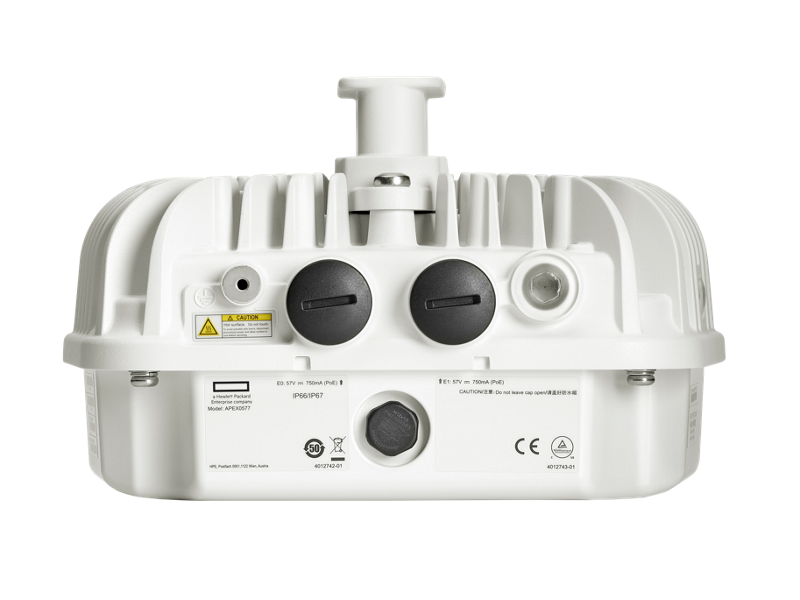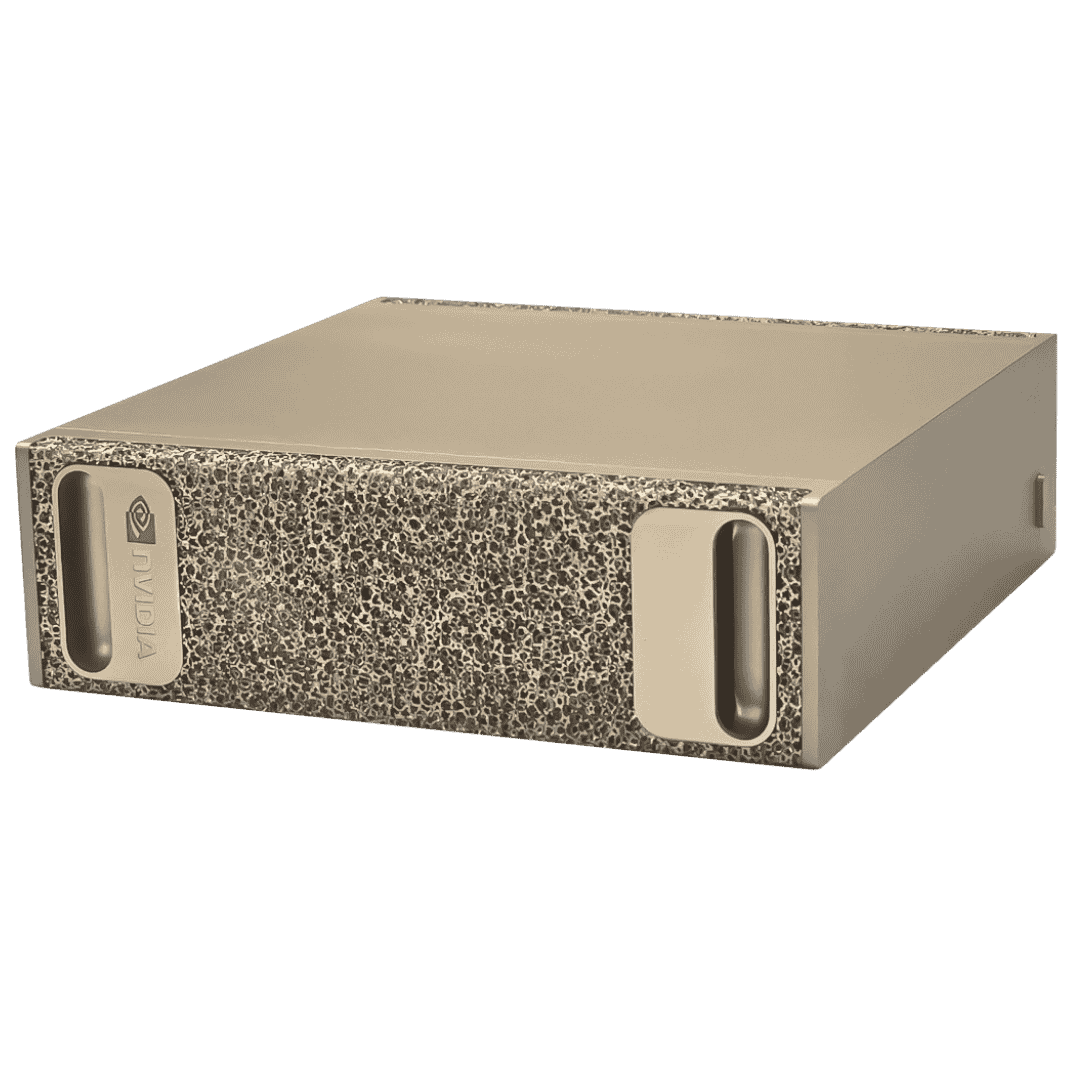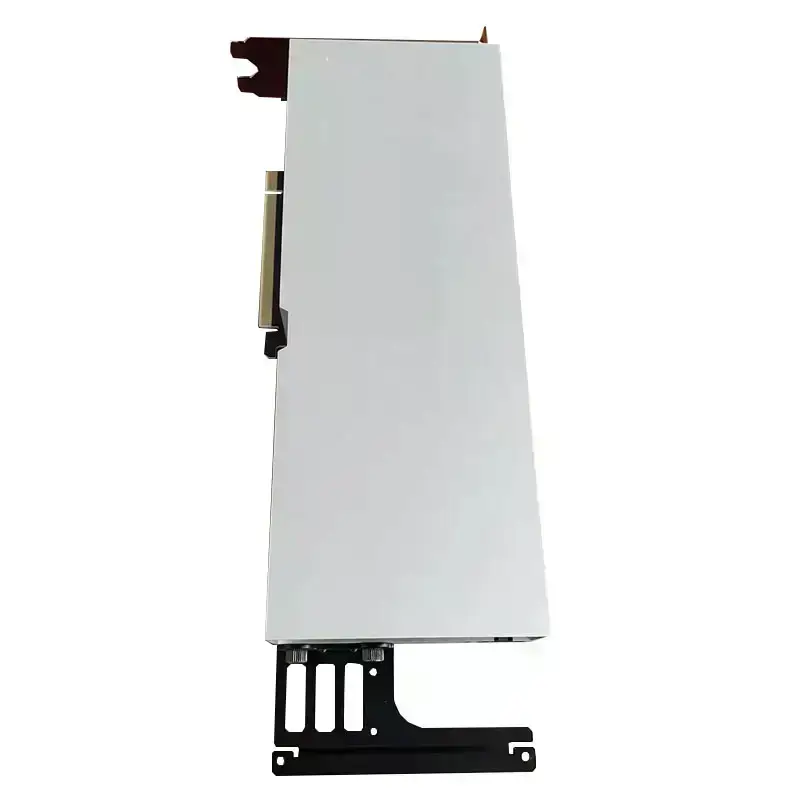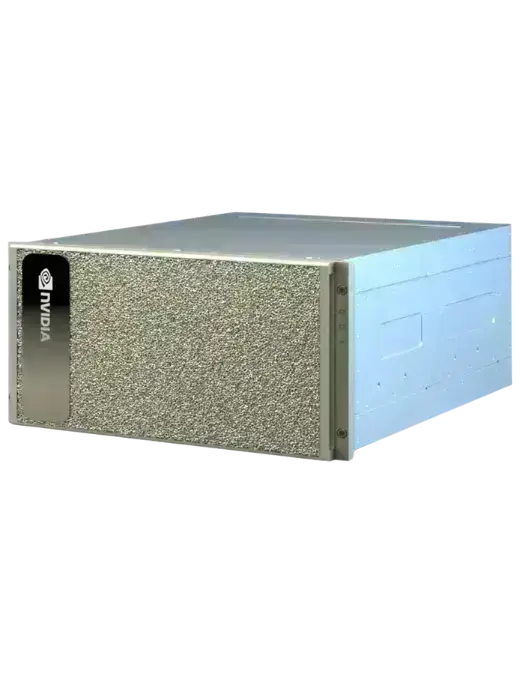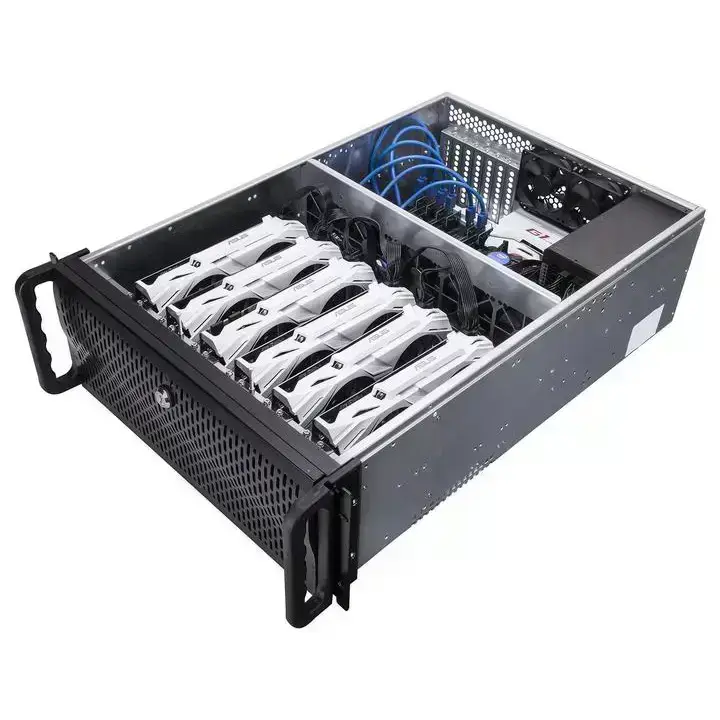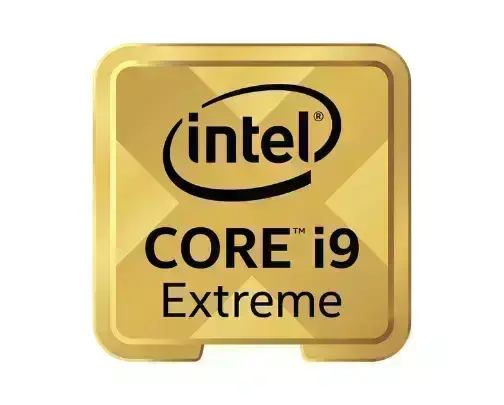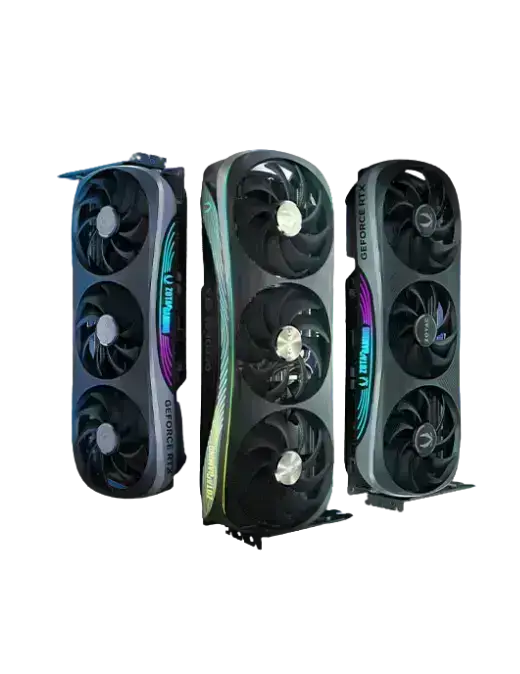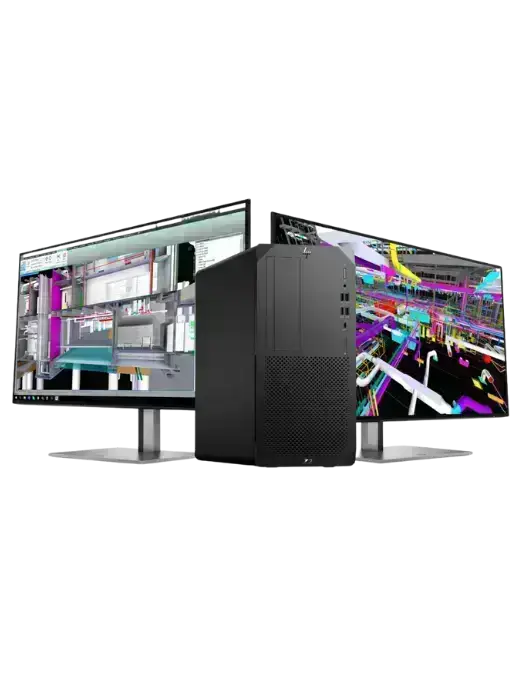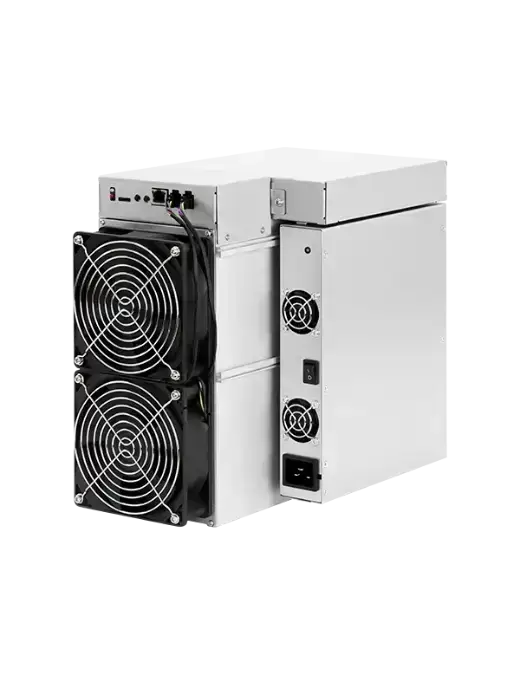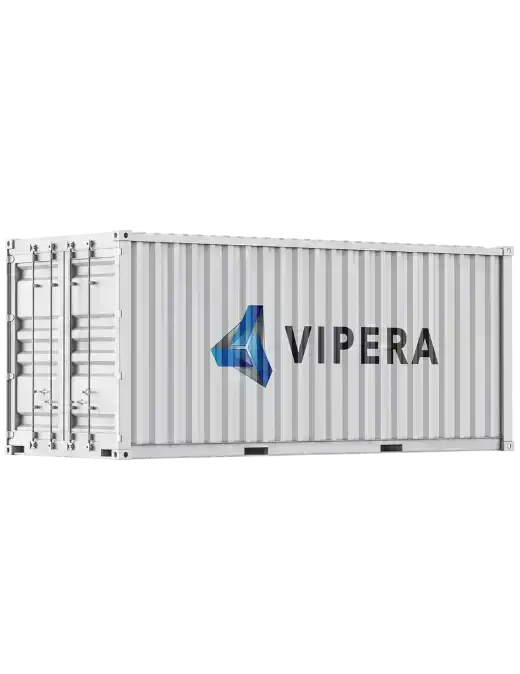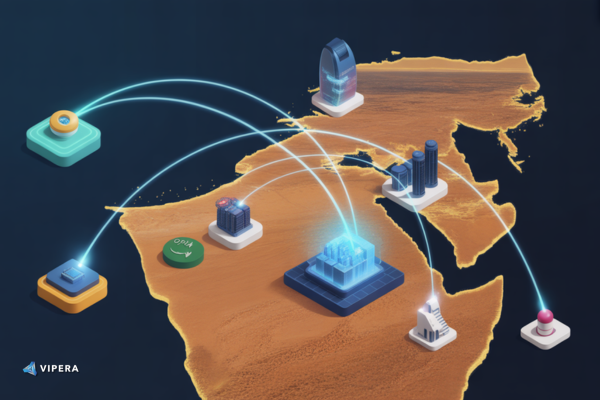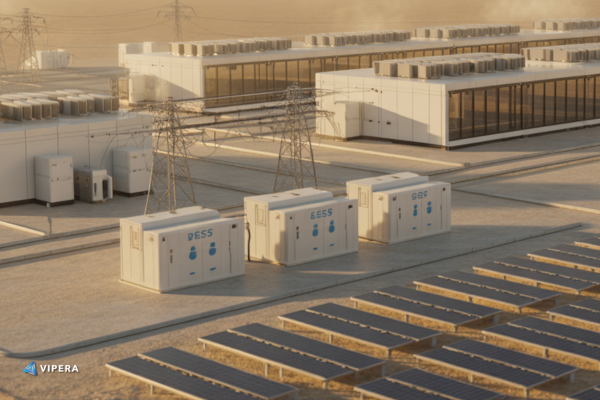The GCC’s AI and Data Center Build‑Out: From Hype to Hand‑Over How Saudi, UAE, Qatar, and neighbors are solving the power, cooling, and supply‑chain puzzle, and how Vipera turns crypto‑farm DNA into turnkey AI capacity.
- The GCC is in a multi‑billion‑dollar race to build AI‑ready data centers, with Saudi Arabia and the UAE leading and Qatar, Oman, Bahrain, and Kuwait expanding targeted capacity.
- The hardest blockers are grid power, high‑density cooling in extreme climates, long‑lead equipment, and data‑sovereignty compliance, each directly affecting timelines, costs, and feasibility.
- Winners are using modular/prefab delivery, liquid cooling, renewable PPAs + BESS, grid‑interactive UPS, and phased financing to compress time‑to‑revenue.
- Vipera’s transition from crypto farms to AI/data centers maps 1:1 to today’s constraints, enabling on‑time, on‑budget delivery and fast instance monetization.
The market at a glance
The GCC is among the fastest‑growing regions globally for AI‑capable data center capacity. Strategic national programs (e.g., Saudi Vision 2030), sovereign‑cloud requirements, and surging AI/inference demand are catalyzing giga‑campuses and regional colocation expansions. Hyperscalers are deepening presence while carrier‑neutral operators and telcos scale out multi‑megawatt campuses. The result is an ecosystem shift from traditional enterprise DCs to AI‑dense, liquid‑cooled designs with power blocks measured in tens to hundreds of megawatts.
Subsea cable routes, pro‑investment policies, and strong balance sheets are structural advantages. Yet, power availability, thermal constraints, and supply‑chain realities remain decisive. Delivery models that minimize critical‑path risk and bring forward first revenue (phased energization) are emerging as best practice across the region.

Country snapshots
Saudi Arabia (KSA)
- Initiatives: Carrier‑neutral campuses and telco‑led builds (e.g., center3), mega‑projects aligned to NEOM/Tonomus, growing cloud footprints.
- Strategic angle: Anchor AI training/inference, sovereign cloud, regional interconnect hub.
- Challenges: Large substations and grid tie‑ins, high‑density thermal design, long‑lead MEP equipment.
- Mitigations: Prefab power rooms, oil‑free or hybrid cooling with liquid, early transformer/GIS procurement, phased campus delivery.
United Arab Emirates (UAE)
- Initiatives: Hyperscale and colocation expansions (e.g., Khazna, Equinix), strong interconnect ecosystems across Abu Dhabi and Dubai.
- Strategic angle: Regional AI hub with strong connectivity and regulatory clarity; rapid turn‑up for AI clusters.
- Challenges: Urban land constraints, very high rack densities, dust/heat management with low water use.
- Mitigations: Direct‑to‑chip and immersion cooling, dry/hybrid coolers, modular white‑space, grid‑interactive UPS for resilience and grid services.
Qatar
- Initiatives: Telco‑anchored capacity growth (e.g., Ooredoo), sovereign‑cloud enablement, cloud region presence.
- Strategic angle: National digital programs, sports/media workloads, compliance‑first architectures.
- Challenges: Scale economics, specialized AI cooling expertise, long‑lead imports.
- Mitigations: Factory‑integrated modules, vendor‑neutral liquid‑cooling stacks, tightly managed logistics.
Oman
- Initiatives: Neutral interconnect nodes and colocation (e.g., Muscat), strong role in subsea cable landings.
- Strategic angle: Route diversity between Europe, Africa, and Asia; resilient DR/active‑active topologies.
- Challenges: Demand aggregation, skills availability.
- Mitigations: Phased builds, connectivity‑led value propositions, operator partnerships.
Bahrain and Kuwait
- Initiatives: Cloud regions anchoring ecosystems; telco/DC operator expansions.
- Strategic angle: Regulatory clarity and sectoral digitization; adjacency to larger demand pools.
- Challenges: Market depth, land/power siting, specialized AI infrastructure at scale.
- Mitigations: Targeted AI pods, sovereign‑compliant designs, partnerships with hyperscalers and regional operators.
The hard problems: technical and logistical challenges
Power availability and grid interconnects
AI campuses need large, stable, scalable power blocks (often 50–200+ MW per phase). Substation builds, impact studies, and interconnection queues can add 18–24 months.
Offsetting strategies include early grid LOIs, dedicated GIS substations, on‑site generation/battery bridging, and renewable PPAs to hedge cost/ESG exposure.
Thermal management in extreme climates
Ambient >40°C, dust/sand ingress, and water scarcity complicate traditional air‑cooled designs and drive higher TCO.
Liquid cooling (direct‑to‑chip, immersion), sealed white‑space, advanced filtration, and dry/hybrid heat rejection reduce energy and water use while enabling 30–150 kW racks.
Rapid densification and shifting tech stacks
AI clusters push from ~10 kW/rack to 50–150 kW+, requiring redesigned electrical backbones, CDUs/CHx, and higher‑spec UPS/PDU architectures.
Factory‑integrated modules and pre‑qualified reference designs shorten commissioning and avoid site‑level integration surprises.
Supply chain and long‑lead items
Large transformers, GIS, switchgear, BESS, and high‑density cooling gear have extended lead times. GPUs, network fabrics (400/800G Ethernet or NDR/HDR InfiniBand), and NVMe‑oF storage also bottleneck.
The cure is synchronized procurement, vendor diversity with form/fit function alternatives, and parallel FATs to de‑risk acceptance.
Regulatory and data sovereignty
Data residency, sectoral rules (e.g., finance, health), and sovereign‑cloud expectations shape site selection, architecture, and sometimes duplicate in‑country footprints.
Early compliance mapping (e.g., KSA PDPL, UAE DP frameworks) prevents redesigns and accelerates go‑live.
Talent and operations
Scarcity of high‑density cooling and critical‑power O&M expertise increases stabilization risk.
Workforce planning, vendor‑embedded training, and remote telemetry/automation mitigate early OPEX volatility.
How these constraints hit timelines, costs, and feasibility
Schedules
Grid interconnects and long‑lead MEP create the critical path. Without modularization and early procurement, first‑power can slip by quarters.
Adopting phased energization (e.g., 5–10 MW tranches) pulls revenue left while the campus continues to scale.
Costs
Climate hardening, filtration, and redundancy add CAPEX; inefficient air‑cooling in legacy designs inflates OPEX until liquid systems are introduced.
Compliance and duplicate sovereign footprints increase TCO but reduce regulatory exposure and unlock sensitive workloads.
Feasibility
Sites lacking near‑term grid capacity, renewable options, or water‑frugal thermal designs face tougher bankability.
Locations with strong interconnect ecosystems and subsea diversity gain latency/resiliency advantages that support AI monetization.
What’s working: innovations and delivery strategies
Modular and prefabricated delivery
Factory‑integrated power rooms (UPS/gens/switchgear), containerized white‑space, and skid‑mounted CDUs shorten build time, improve QA/QC, and reduce interface risk.
Liquid cooling as the default for AI
Direct‑to‑chip and immersion enable high‑density racks with lower energy/water use; well‑designed secondary loops and coolant chemistries fit desert constraints.
Renewable PPAs + BESS and grid‑interactive UPS
24/7 clean‑energy contracting with batteries stabilizes costs and ESG scores; grid‑interactive UPS can monetize frequency services while improving resilience.
Electrical architecture tuned for AI
High‑efficiency UPS topologies, right‑sized PDUs, DC‑bus approaches, and careful selectivity studies cut losses and stranded capacity.
Financing and phasing
Pay‑as‑you‑grow power blocks, JV structures with telcos, and phased GPU cluster rollouts match cash flow to demand ramps.
Connectivity‑led siting
Choosing nodes with subsea route diversity and carrier ecosystems improves performance, resilience, and customer attraction for training/inference.
A quick reference table
Theme | Core challenge | Impact | Working strategies |
|---|
Power | Substation build, interconnect queues | 6–24 month delays; capex escalation | Early LOIs, dedicated GIS, BESS bridging, renewable PPAs |
Cooling | >40°C ambient, dust, water scarcity | Higher PUE/TCO; risk to uptime | Direct‑to‑chip/immersion, dry/hybrid coolers, sealed white‑space |
Density | 50–150 kW racks | Rework of MEP; long‑lead gear | Prefab MEP, reference designs, early FAT |
Supply chain | Transformers, switchgear, GPUs | Schedule slips, budget creep | Synchronized procurement, vendor diversity, parallel commissioning |
Compliance | Sovereign data regs | Duplicated footprints, design changes | Early compliance mapping, sovereign‑ready reference architectures |
Talent | Scarce high‑density O&M | Slower stabilization, OPEX risk | Embedded training, automation, remote telemetry
|

A typical fast‑track AI campus plan (30 MW example)
- Weeks 0–4: Site diligence and concept
Utility and fiber LOIs; soils and geotech; high‑level single‑line diagrams; capex/opex modeling; lock transformer/GIS/BESS production slots. - Weeks 4–12: Detailed design and ground‑break
Finalize electrical and cooling reference designs (liquid‑cooling baseline); submit permits; place long‑lead POs; factory integration begins for power rooms and CDUs.- Weeks 12–26: MEP install and first‑power
Erect prefab power rooms; white‑space shells; install dry/hybrid coolers; bring up first 5–10 MW block; site acceptance for cooling loops. - Weeks 20–32: Cluster turn‑up and monetization
Rack GPUs; deploy 400/800G fabric (Ethernet/InfiniBand); storage (NVMe‑oF); provision bare‑metal/K8s/Slurm; security hardening; onboard first inference/training tenants.Add power blocks and AI pods in parallel; align compute procurement with demand; introduce renewable PPA tranches and grid‑interactive UPS modes.Where Vipera fitsFrom crypto farms to turnkey AI and data centers, the region’s central questions are scale, speed, and sustainability. Vipera’s crypto‑to‑AI evolution directly addresses those imperatives:Power and density engineering Experience distributing multi‑MW power to very dense racks (30–100+ kW), selective coordination studies, and staged energization to compress “first revenue” timelines.
Prefabricated electrical rooms and modular UPS/generator pods that de‑risk the critical path. Advanced cooling in harsh climates Practical deployments of direct‑to‑chip and immersion cooling, sealed containment, and dust ingress management tailored to desert environments. Vendor‑neutral integration of CDUs, coolants, and secondary loops; water‑frugal heat‑rejection designs (dry/hybrid). 
AI cluster bring‑up and operations Rapid GPU sourcing and racking; non‑blocking 400/800G Ethernet or InfiniBand fabrics; NVMe‑oF storage. Bare‑metal provisioning, MIG partitioning, Slurm/Kubernetes scheduling, and MLOps tooling for “compute‑ready” acceptance. Program management and risk control 5–50 MW reference designs and BoMs; long‑lead locking (transformers, GIS, BESS); integrated master schedules; earned‑value tracking; factory acceptance and parallel commissioning. Compliance‑by‑design to align with GCC data protection regimes and Tier III/IV targets. Energy and economics Structuring renewable PPAs and battery storage for cost stability and ESG outcomes; grid‑interactive UPS for ancillary revenue. Commercial models (GPU‑as‑a‑Service, reserved/burst capacity) and SLA‑backed onboarding to monetize instances immediately post‑commissioning. Why Vipera delivers on time and on budget, and gets you monetizing fast- Standardized, modular reference designs avoid reinvention and reduce change orders.
- Long‑lead items are locked early; factory‑integrated modules accelerate installation and reduce site risk.
- Liquid‑cooling‑first designs cut lifetime energy and water costs while unlocking AI densities.
- A commercialization playbook—contracts, observability, billing, and SRE—turns capacity into revenue as soon as halls are energized.
Closing thoughtsThe GCC is building one of the world’s most consequential AI infrastructure footprints. Success will hinge on getting power, cooling, and supply chains right—and on delivery models that bring revenue forward safely. The conversation captured on LinkedIn is spot‑on: winners will be those who can execute at scale, quickly and sustainably.Vipera’s journey from crypto to AI/data centers is built for this moment. If you’re planning or re‑scoping an AI campus in KSA, UAE, Qatar, or beyond, let’s align on a phased blueprint that gets you to first revenue fast, then scales with demand while protecting budget and uptime. |
